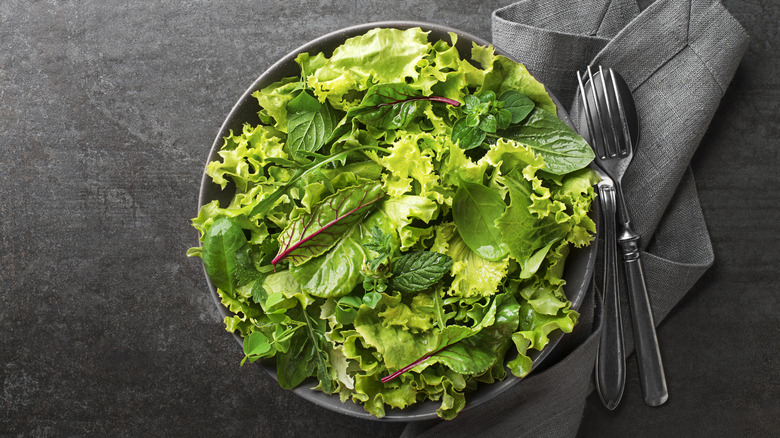Chicories Vs Lettuces: What Sets These Greens Apart From Each Other?
Leafy greens are staples when it comes to health-conscious eating given the range of vital nutrients each variety has to offer. However, despite how they may appear, not all greens are created equally. When perusing the produce section to prepare a fresh, crunchy salad or build a balanced sandwich, it's easy to assume that greens such as radicchio and endive are simply more colorful or bitter types of lettuce. In reality, these leafy veggies belong to an entirely different category called chicory, which offers its own unique characteristics, culinary uses, and nutritional profiles that set them apart from true lettuces.
Though frequently grouped together as salad greens, chicories and lettuces differ in everything from flavor and texture to growing seasons and harvesting techniques. Chicories tend to thrive in cooler climates and are prized for their slightly bitter, bold taste — qualities that make them especially popular in European cuisines. Lettuce varieties are usually more delicate and subtly sweet, often used to add crispness and freshness to a dish without overpowering other ingredients. Here, we delve into the subtle and significant nuances of the two categories of leafy vegetables, and explore their diversity when cooking and serving them.
Let's get into all things lettuce
What makes a true lettuce? Beyond being a salad staple, lettuce varieties hail from the species Lactuca sativa, which is a member of the daisy (Asteraceae) family, to which chicories also belong. Cultivating lettuce for consumption dates back to the late 2600s B.C., when lettuce in ancient Egypt was considered a fertility-promoting medicine. Unlike how we consume lettuce today, ancient Egyptians seemingly skipped the leaves and used the milky sap for its purported medicinal properties, saving the seeds from lettuce flowers to press into oil for cooking. Eventually, Greeks and Romans began cultivating lettuce and serving it in salads before dessert (due to the perceived sleep-inducing properties of the sap). In the 1490s, lettuce made its journey into the Americas, accompanying Christopher Columbus on his voyages.
In today's culinary landscape, lettuces are featured in diverse dishes worldwide and subjected to a variety of preparation techniques that honor regional cooking traditions. In the United States, raw lettuce is commonplace and chopped into salads, layered into sandwiches, or used as a low-carb swap for burger buns and tortillas. As a matter of fact, playing around with different lettuce varieties can impart nuanced notes to your salads, enhancing the overall experience. Sturdy lettuce varieties, such as romaine, can be grilled for a flavorsome foundation, upon which you can layer additional salad components. In the eastern hemisphere, Chinese braised lettuce or Taiwanese lettuce stir fry are examples of delicious lettuce-based recipes.
The times when chicories shine
Chicory (Cichorium intybus) is a flowering plant native to western Asia, Europe, and central Russia that has entered the botanical mainstream in North America. Contrary to the buttery sweetness of raw lettuce, leafy chicories tend to have a distinctly sharp bitterness. While the crisp leaves of chicory plants, such as endive and escarole, are often enjoyed raw in fresh salads, they can also be braised in a flavorful sauce or roasted with aromatic herbs and spices. Typically, any high-heat cooking method helps tone down the earthy bitterness and lets chicory's natural sweetness shine.
Like lettuce, the use of chicory for culinary and medicinal purposes can be traced back to the ancient Egyptians. But, unlike lettuce, one more part of the plant has a fascinating culinary history: The thick taproot of chicories can be harvested, dried, roasted, and ground into a powder that's brewable like coffee. During the 18th and 19th centuries in Europe, chicory was chosen as a coffee alternative when coffee imports were blocked due to the region's political climate. In time, France became a major exporter of chicory, and chicory coffee spread across its colonies, including to settlers in North America. In the United States, chicory coffee gained popularity during the Civil War when the Union blockade cut off coffee supplies to New Orleans. Residents, drawing on their French roots, revived the tradition of mixing chicory with coffee to extend the availability of this treasured, caffeinated resource in their homes. Even after the war ended, this historical influence remains prevalent in New Orleans coffee culture today.


